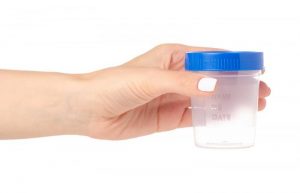Drug Test Cut Off Levels
The standard procedure in drug testing is to utilize drug test cut off levels which is a specific number set by the laboratories that is used to determine the threshold of when a test will be negative or positive for illegal drugs.
Once the specimen reaches the laboratory, the specimen undergoes a comprehensive analysis which measures the amount of the specific drug metabolite present in the specimen at the time of testing. Labs utilize this procedure of established cut off levels to ensure that there are specific thresholds utilized to determine whether a result is negative or positive.
How do drug test cut off levels work?
One example of how drug test cut off levels impact drug testing would be for marijuana testing. The current screening drug test cut off level for marijuana in urine specimen is 50ng/ml. This cutoff level helps prevent false positives based on second hand smoke. Another example of a urine cut off level would be for opiate testing, the current drug test cut off levels are set at 2000ng/ml which was changed to prevent false positives based on consumption of poppy seeds.
All SAMHSA Certified Laboratories currently use two types of cut off levels (screen and confirmation). The initial screening cut off levels are used to determine whether to immediately report out a negative drug test result after a screening test or to send the specimen on to further confirmation testing. A higher cut off level for the screening test may cast a wider net to find the drug class being testing. The confirmation test is then the definitive cutoff level used to determine if a positive result exists.
A screening result commonly indicates that a class of drugs is positive, not necessarily which specific drug or metabolite triggered the positive. Confirmation testing is necessary because a false positive can occur during the screening process and could represent a positive result and the drug is not actually present.
In order to determine if a urine specimen is negative or positive for drugs of abuse, all specimens are put thorough an initial screening procedure and if tested above the screening cut off levels then confirmation testing is required. Confirmation testing is typically conducted using gas chromatography (GC), gas chromatography-mass spectrometry (GC-MS) or liquid chromatography-mass spectrometry/mass spectrometry (LC-MS/MS).
The subsequent confirmatory procedures are performed on utilizing a new specimen sample from the original specimen (typically bottle A) and ran through a specific machine used to determine if the specific drug/metabolite that caused the initial non negative on the screening process. Specimens testing above the confirmation test cut off levels are reported by the laboratory as positive.
The cut off levels or Federal Workplace testing and Department of Transportation (DOT) testing are established by: The United States Department of Health And Human Services (HHS) – Mandatory Guidelines for Federal Workplace Drug Testing Programs.
These guidelines are published by the HHS agency the Substance Abuse and Mental Health Services Administration (SAMHSA). SAMHSA also provides recommended cut off levels for Non DOT testing.
Drug Testing Cut Off levels for the standard 5 panel drug urine test are as follows:
Many non-regulated employers mirror the cutoff levels established by the government while others customize their drug testing panels to be more sensitive to certain drugs
based upon their program needs and unique workforce. Drug testing has two cutoff levels for positive detection – screening and confirmation. Laboratories that follow the guidelines will consider drug testing to be negative if detection is below either the screening or confirmation cutoff level. In the case of urine analysis, drug testing cutoff levels are measured in nanograms per milliliter (ng/ml). Screening and confirmation testing are performed using different testing methodologies that have different specificity and sensitivity. The screening and confirmation testing
may have different cut off levels. When the lab performs the screening testing, if the specimen tests below the cut off level for screening, the lab reports the test result as negative.
What happens during a confirmation screening?
Confirmation testing or “gas chromatography-mass spectrometry” (GC/MS) identifies the exact drug metabolite at a specific quantitative level. Confirmation testing can also
be performed with “liquid chromatography–mass spectrometry” (LC/MS). These confirmation techniques eliminate false positives or false negatives. A medical review
officer (MRO) is used for further quality control and to rule out positives based on legitimately prescribed drugs. For non-regulated testing, cut off levels may differ based on the specific laboratory used but for DOT/regulated drug testing, the levels will be the same among all SAMHSA certified laboratories.
Some frequently asked questions about drug test cut off levels:
What about over the counter medications?
Over the counter medications are ruled out during the confirmation testing process if they show up at all.
What if donor is abusing their prescription?
Unfortunately, the cut off levels do not tell us:
1. When the drug was used
2. How much drug was used, or
3. How strong the drug is
Levels do not indicate frequency or amount of use it merely provides an indication that the specific drug and its metabolite is present in a person’s system.
Are Quant Levels Provided on Positive Tests?
• Typically No (not permitted for Federal Drug Testing)
• DOT prohibits providing Quant levels on all DOT required tests
• A reported positive drug test is positive regardless of the levels it tested at
• For Non DOT testing there may be exceptions
Can different foods/products trigger a positive result?
Yes, potentially in screening but these are ruled out during the confirmation testing process.
Why is confirmation testing important?
Confirmation testing provides for a legally defensible drug test result. One or more specific metabolites can be identified, quantified and reported using the applicable
confirmation cutoff for a positive test result. No false positives.


